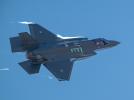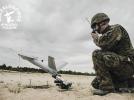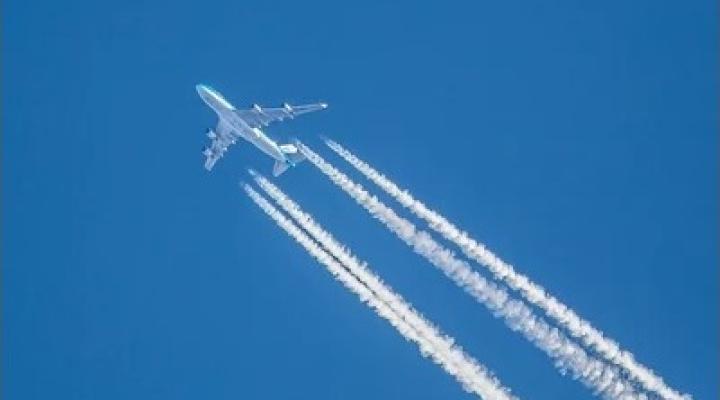Sriwijaya B732 at Pekanbaru and Palembang on Dec 24th 2011, hydraulic failure and runway overrun
A Sriwijaya Boeing 737-200, registration PK-CJD performing flight SJ-41 from Pekanbaru to Jakarta (Indonesia) with 128 passengers and 6 crew, was in the initial climb through 2000 feet out of Pekanbaru when the crew noticed the quantity of hydraulic system A was decreasing and the flaps had stopped between 1 and UP position with the slats also not having fully retracted. Cimbing through 5000 feet the quantity of hydraulic system A had depleted. While climbing through FL250 the crew noticed the hydraulic quantity of system B was now decreasing, too, and the crew decided to divert to Palembang (Indonesia). The aircraft entered a hold to burn off fuel to get below maximum landing weight, then completed a VOR/DME approach to Palembang's runway 29 with a safe touchdown, however, during roll out the crew felt no deceleration, kept air aircraft on the runway center line using asymmetric reverse thrust and even increased reverse thrust below 60 knots. The aircraft overran the end of the runway and came to a stop with the nose gear on soft ground and the main landing gear at the edge of the runway end safety area and soft ground about 20 meters past the end of the runway. The aircraft was evacuated.
Indonsia's NTSC released their final report concluding the probable causes of the serious incident were:
- Defective hydraulic hose of RH MLG Actuator at “Lock Port” position was made the hydraulic fluid drawn overboard.
- The defective hydraulic hose is likely consistent with fatigue mode initiated by fretting damage on the wire mesh as a result of vibration.
- It likely that loss of hydraulic system A followed by the lossing of system B was due to the defective of EHSV P/N 73016 that led the Main Rudder PCU had excessive internal leak.
The NTSC reported that the aircraft came to a stop about "20 meter from the end of runway 11" suggesting the aircraft had landed on runway 11, but on the map - see below - showed the aircraft came to a stop past the end of runway 29 (opposite direction).
Editorial note: It appears, that Indonesia's Ministry of Transport, Indonesia's Directorate General of Civil Aviation as well as Indonesia's NTSC do not understand how runway numbering works - only the runway in direction of the landing or departing movement, in this case 29, is to be referenced, the runway in opposite direction, in this case 11, does not "exist" in that scenario. Each runway has exactly one threshold (before the actual numbers) and exactly one runway end (past and far away from the numbers). Runway 11 threshold is thus runway 29 end and Runway 11 end is thus runway 29 threshold, the terms and references become unambiguous that way. These misleading descriptions of aircraft positions relative to runways as result of runway numbers as well as the terms threshold and end being confused occur repeatedly and frequently at all levels of Indonesian administration, be it the Ministry of Transport, the Directorate General of Civil Aviation or the National Transportation Safety Committee.
The NTSC reported that post flight examination of the aircraft revealed no damage but the hydraulic hose at the right hand main landing gear up-lock actuator at the "Lock-Port" position, which was found leaking.
Two runway lights were found broken as result of impact with the aircraft's nose gear and a taxiway sign was found damaged as result of impact with the right hand engine of the aircraft.
The NTSC reported that laboratory analysis of the hydraulic hose identified: "As a result of repetitive load of hydraulic operation at the hose and the present of fretting defects due to hose vibration, some wires mesh were fracture because of fatigue. Since there were wires mesh fractures at that location, the integrity of the hose become weak and finally burst. The sudden burst indicated by the presence of deformation on the wires and fractures tip angle about 45º."
The defective hose could not explain the failure of hydraulic system B. Further examination of the aircraft identified a defective rudder power control unit (RPCU) which was leaking internally. The RPCU was replaced and taken to the manufacturer for further analysis, which determined the electro hydraulic servo valve was defective and produced the excessive internal leak.
With respect to the RPCU the NTSC analysed that there was a "a possibility of both systems may transfer its hydraulic fluid."
The NTSC analysed that after landing the flight controls A and B had been selected to the standby hydraulic system and the flaps had been selected to alternate and stated: "It means that pilot used the standby hydraulic system to cover the limited system i.e. trailing edge flap, Leading Edge Flap and Thrust Reverser. It seemed that the standby hydraulic system was working normally without any leak (the standby hydraulic reservoir still enough to support the system). The braking systems in this serious incident were supported by accumulators."
The NTSC further analysed: "It seemed that the standby hydraulic system was working normally without any leak (the standby hydraulic reservoir still enough to support the system). ... As such, when on the landing roll the aircraft break system and reversers were still available at low deceleration ability until the speed 60kts, then inactive till rest into stopped. Hence worsen condition was avoided."
The NTSC did not analyse or report why the brakes appeared ineffective at speeds below 60 knots.
The airline as well as Directorate General of Civil Aviation responded with immediate safety actions concerning the total loss of hydraulics.
Safety recommendations to the airline and Indonesia's DGCA were issued concerning maintenance and monitoring of the hydraulic systems.
The hydraulic hose's damage causing the occurrence (Photo: NTSC):
The aircraft in its final position (Photo: NTSC):
"The relative aircraft last position in red triangle" at "20 meter from the end of runway 11" (Graphics: NTSC):
http://avherald.com/h?article=4730f0ad














Komentarze